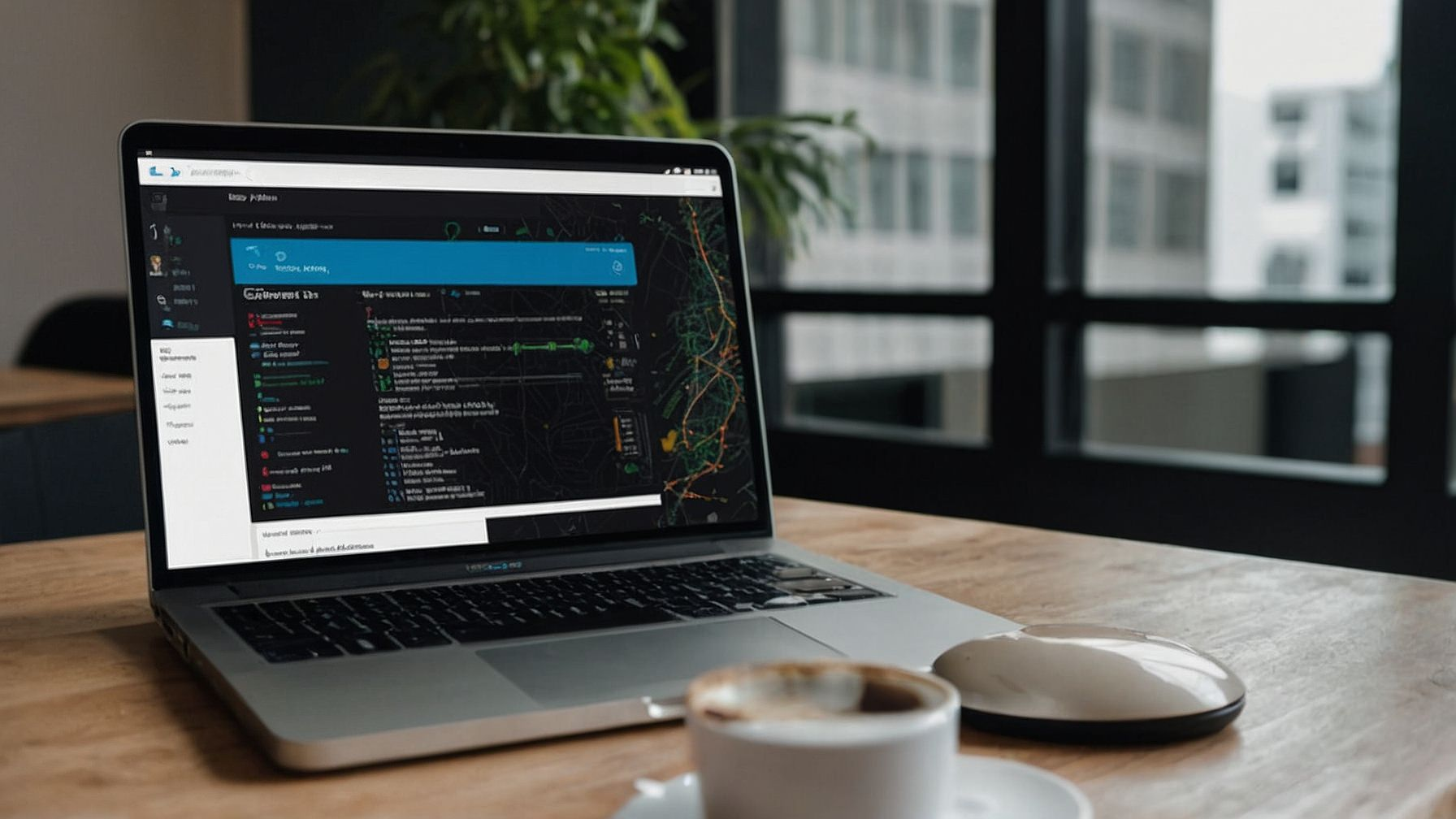
Embracing the Agile methodology transforms the mobile app development landscape, offering a dynamic and iterative process that prioritizes customer satisfaction and response to change.
Below, we’ll explore Agile and how this impactful approach can revolutionize your project from a mere concept to a market-ready application, ensuring quality and adaptability at every sprint.
Contact TechAhead today! We are leaders in Agile consulting and app development.
The Agile Software Development Process
As we set out on the mobile app development journey, it’s crucial to navigate the Agile process with precision and care. Here’s a breakdown of each step, ensuring your app is built efficiently and effectively:
-
Requirement Analysis: We start by gathering all necessary information. This phase involves identifying what our users need from the mobile application, like understanding what adventurers expect from their journey. We document every feature and function required to meet these needs.
-
Design: Crafting the blueprint of our mobile app is critical. In this stage, we take our analysis and begin creating wireframes and design prototypes. It’s an artistic and technical effort to ensure that user experience (UX) design principles are at the forefront.
-
Development: With designs in hand, we embark on building the actual product. Our development team writes code, develops software, and constructs features one by one. Think of it as packing our rafts with supplies; every item must be carefully chosen for its purpose.
-
Testing: Testing in Agile development is continuous, but after a significant development phase, it’s similar to performing safety checks before hitting the water. Our testers look for bugs and issues that need fixing to ensure smooth sailing – or, in our case, a seamless user experience.
-
Deployment: Once testing gives us the green light, we launch the application into its intended environment. We release our app into either test markets or full deployment, depending on our strategy.
-
Review: After deployment comes reflection on performance. We gather user feedback, informing us of any adjustments or enhancements needed for subsequent iterations.
-
Build An App Using Agile: New mobile and software applications are coming up in the marketplace almost on a daily basis. But how many of them are a success? Our development team will come up with a novel idea that will cater to the needs of your customers, including the ones you did not even know existed.
The Need For Agile Methodology
Traditionally, applications were developed using the Waterfall methodology. This is a sequential method where app development is done in phases. The next phase is started only when the previous phase is complete. There is little emphasis on communication between the app development team and the customers.
At the end of app development, a test for the app’s feasibility and marketability is done to analyze whether the app is of any value or not. Sometimes, the app development may take such a long time that the market dynamics have changed by the end of the process, and the app is rendered irrelevant.
As customer-development interaction in waterfall methodology is limited, developers cannot gauge customers’ moods. By the time this is assessed, it may be too late to make any changes in the app to make it more saleable. The waterfall method allows for little flexibility in app development. It is a risky model unsuitable for long and ongoing projects and projects where requirements are at a high risk of changing.
There was a need for a model that ensures that the app we are developing caters to the needs of the customers. This gave rise to the Agile Methodology in the 1990s. Agile development is an incremental model of app development.
The project is developed and released in incremental stages or ‘iterations’. It gives ample opportunities to the development team to assess whether their app is moving in the right direction throughout the development cycle.
If the developers feel their app needs some modifications due to a change in customer needs, there is scope for the project to be pivoted around at any stage of app development. The result of this “inspect-and-adapt approach” is to greatly reduce the developers’ effort and time and develop an app with a high probability of success.
Agile Project Development: How Does It Work?
In the Agile development methodology, each project is broken into short-duration ‘iterations’ or ‘sprints.’ Each iteration would be the same duration, lasting a week or so. At the end of each iteration, a simple working model of the project would be launched in the market to check its feasibility.
Regular team meetings would be held at the end of each iteration to assess the possible roadblocks. Each iteration allows the developers to change the project depending on the market response to the launched version.
Any features that are not delivered in the first iteration would be incorporated on a priority level in successive iterations. The Agile development model offers freedom and flexibility to developers. It gives ample opportunities for interactions between developers and customers and between the development teams handling the different aspects of the project, like finance, designing, coding, and marketing.
The Agile method is most suitable for small projects that cater to customers whose needs might be moderately or highly variable. An example to consider is the Instagram app, which is very popular these days. When Instagram was conceived, it was found to be very similar to Foursquare in its features. So, the developers realized that the project could fail. They pivoted the project and introduced the photography element in their app, making Instagram so widely used and appreciated.
Had this app been developed on the Waterfall methodology, the app would have been launched at the end of a long and tedious only to find that a similar app already existed in the market. What a waste it would have been to the developers and investors!
Moving from the structured stages of the Agile development process, we transition to a host of significant advantages that enhance every step of creating your app. High quality is at the forefront, not just as an end goal but as a constant driver throughout the Agile software development cycle.
By embedding quality checks and balances into each phase—from requirement analysis to deployment—we ensure that what you get isn’t just a working software but an impeccable product tailored to meet user needs effectively.
The beauty of Agile methodologies lies in their inherent flexibility and risk-reduction capabilities. We adeptly adjust to new insights or changes without derailing the development timeline.
This means risks are identified early on and can be mitigated swiftly—a boon for complex projects where variables may change with real-time feedback. Visibility into every stage gives you unparalleled access to monitor progress, engage with team members, and steer outcomes toward continuous improvement.
Embracing these benefits helps TechAhead deliver your mobile application successfully and set it up for long-term evolution and refinement.
Effective Agile Project Management Frameworks (Scrum, Kanban, Lean, XP, APF)
To pick the right Agile project management framework, it’s crucial to have the right guide and gear to navigate the journey successfully. The frameworks we’re about to explore offer distinct approaches, ensuring that your mobile app development process flows smoothly.
-
Scrum: This popular choice among Agile frameworks focuses on short work sprints, typically two weeks, followed by a review. A Scrum Master facilitates the process, helping Agile teams reach their milestones. Each sprint results in potentially shippable features, which aligns with continuous feedback and iterative improvement.
-
Kanban: Imagine a board filled with sticky notes that track progress through various stages — that’s Kanban. It emphasizes continuous delivery without overburdening development teams. The visual nature of Kanban boards assists in managing workloads and provides clear visibility into the development lifecycle.
-
Lean: Rooted in maximizing value while minimizing waste, Lean principles drive efficiency. It encourages software teams to deliver high-quality products faster by eliminating non-value-added activities. This leads to reduced development costs and focuses on innovating based on what your users actually need.
-
Extreme Programming (XP): With an emphasis on technical Agile practices, including pair programming and comprehensive documentation, XP aims for higher-quality software and greater adaptability to changing customer requirements. Agile practitioners often use XP to ensure their software development processes are disciplined yet flexible enough to accommodate new insights.
-
Adaptive Project Framework (APF): This framework allows project managers to adapt, learn, and adjust goals as they progress through various stages of app development. APF acts as your navigation tool through uncharted territories where requirements can be unpredictable or evolving constantly.
Pros And Cons Of Agile Methodology
The Agile methodology has many advantages:
• Working software is delivered to the market frequently at the end of an iteration.
• There is more room for making changes and adding features to the app at any stage of its development.
• More stress is placed on people and interactions rather than tools and results.
• Continuous developer-customer interaction and inter-team interactions lead to good collaborations and better results.
However, the Agile methodology has some disadvantages too:
• There is less stress on designing and documentation during the app development process.
• App developers may lose focus and go off track if the customers’ feedback is not desirable or the customer is unclear about what they want from an app.
• There is no room for fresher programmers in the Agile Methodology team as they require an experienced development team to assess market feedback and make decisions about changes that need to be made in the app.
Conclusion
Despite its disadvantages, Agile development has become very popular in the app development circle. According to a recent survey, about 52% of IT developers use this model in some form or another. It has been and will continue to be a milestone in app development methodologies.
With a focus on continuous improvement and leveraging effective Agile frameworks, you’re set to turn your app vision into a dynamic reality. Your path to successful mobile application development is clear—forge ahead with agility at your core! Stay proactive, iterate swiftly, and watch as your app takes shape and thrives in users’ hands.
FAQs
1. What is Agile development, and how does it help build apps?
Agile development is a software development methodology that uses an iterative and collaborative approach to create applications. It helps teams deliver working software quickly and efficiently while adapting to changes throughout the process.
2. Why choose Agile over the traditional Waterfall method?
The benefits of Agile include its flexibility and ability to accommodate changes in customer needs or market conditions, unlike the more rigid Waterfall methodology which follows a sequential design process.
3. Can you collaborate with customers using Agile development for app building?
Absolutely! One key aspect of Agile is comprehensive documentation along with customer collaboration at every step, ensuring that client feedback is integrated into each iteration of your desktop or SaaS-based app.
4. Are there specific tools needed for following an Agile software development process?
Yes, several tools support the iterative and incremental development aspects of Agile, such as scrum boards for task and project management and tracking progress toward objectives during each sprint of work.
5. Is Scrum part of Agile methodologies used in creating apps?
Indeed, Scrum is one form within the broader umbrella of Agile software development methodologies that organizes work in short cycles known as sprints, emphasizing teamwork, accountability, and iterative progress towards well-defined goals.










